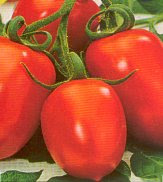Brewster, NY -- Cornell Cooperative Extension of Putnam County Master Gardener Volunteers have announced that two scholarships of $500 will be awarded this year. Residents of Putnam County who are graduating seniors are eligible to apply for the scholarships for the study of Plant Science, Horticulture, Floriculture, Architectural Landscape Design, Forestry, Botany or other environmentally related programs.
Students must be Putnam County residents but can attend any high school or be home-schooled. Awardees must plan to pursue advanced education in a recognized institution of higher learning.
More details about the scholarship, the application form and eligibility criteria are available through high schools’ guidance offices and online at www.cce.cornell.edu/putnam. We encourage all students who meet the criteria to apply for these scholarships.
Together with the professional horticulture staff of Cornell Cooperative Extension, Master Gardener Volunteers offer adult education workshops, staff the daily (9-12) Horticulture Hotline, answer plant and insect questions at the Cold Spring Farmers Market, host plant sales and work with gardeners at the Tilly Foster Farm Community Garden. Master Gardener volunteers help link Putnam County residents with science-based information from Cornell University and other land-grant colleges to help people use natural resources wisely, to become more confident home gardeners, and to landscape with the environment in mind.
For more information on the scholarship:
Master Gardener Volunteers of Putnam County Scholarship Committee
Cathy Croft, Chair, 54 Enoch Crosby Road, Brewster, NY 10509
cathycroft@comcast.net; 845-279-6925











